Defender 850: Changing How You Hunt
October 8th, 2017 by BTC Editor
For 2017, Browning Trail Cameras came up with a new concept in trail cameras: the Defender 850. When they first unveiled this camera at ATA, I knew it was going to be a game changer. The Defender has some unique features and technology that set it apart from the rest and that can take your deer hunting to the next level. Here are 3 features on the Defender 850 trail camera that will allow you to change the way you hunt this season.
1 – Bluetooth and WiFi Connectivity Via the Browning Trail Cameras Mobile App
You can connect to the Defender on your mobile device from about 60 yards away via the new Browning Trail Cameras app. Through the app you can control the camera settings and download images and video straight to your phone or tablet, allowing you to keep your favorite hunting areas undisturbed and free of scent.
I have my Defender’s set up close to a few of my favorite tree stands so I can check the camera while I’m in my stand without actually having to touch the camera and leave my scent in the area where I am expecting the deer to walk out.
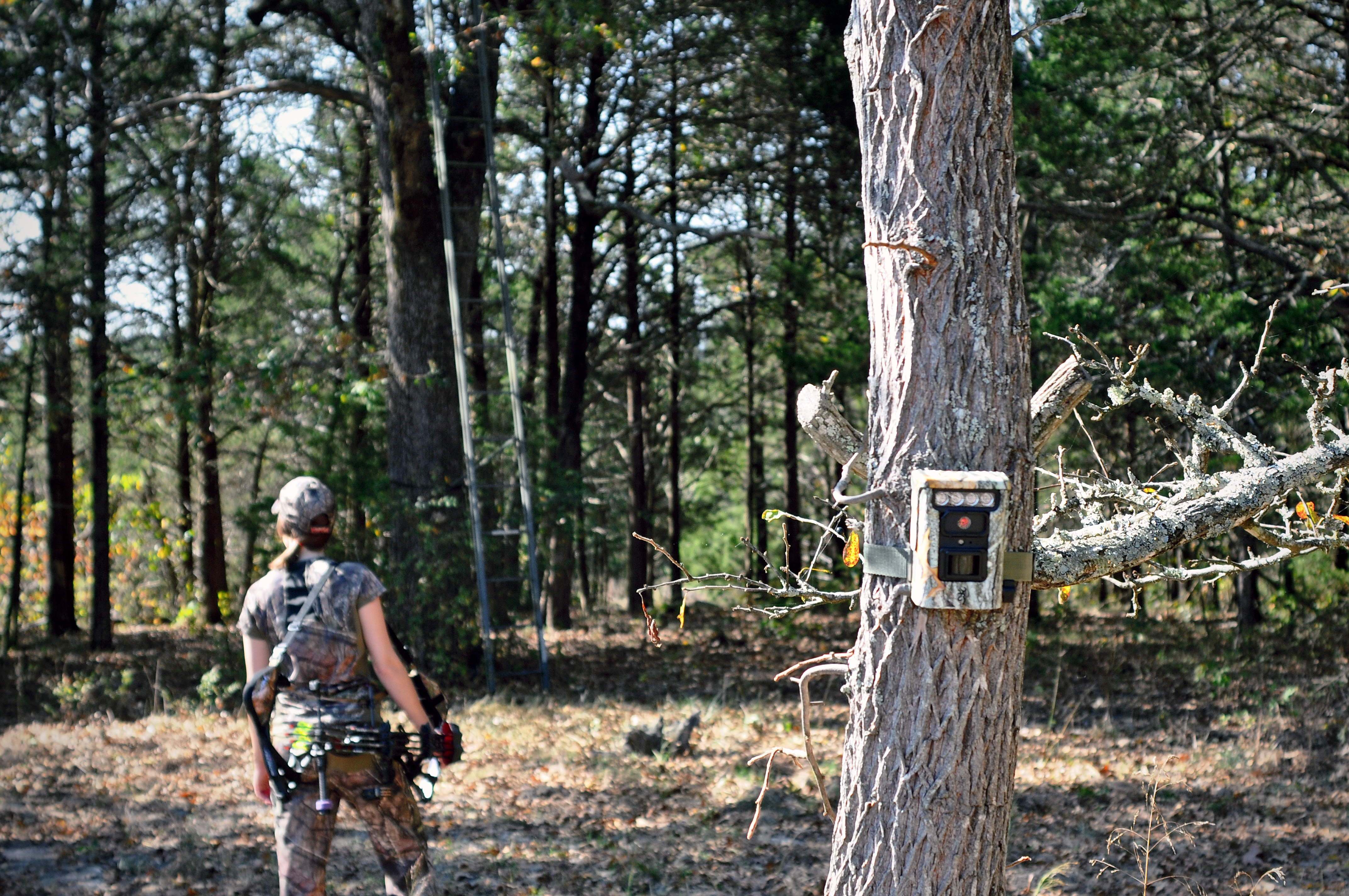
2 – Adjustable IR Flash
This feature is also new for 2017 and allows you to control the range of your LED’s on your nighttime images. There are 3 different flash settings – Power Save, Long Range, and Fast Motion – that allow you to maximize the performance of your Browning Trail Cameras, no matter where they are set up.
–Power Save: This is the most economical of the 3 flash modes. The flash goes out to about 70 feet, which is perfect for wooded areas.
–Long Range: The flash goes out to about 120 feet. This is perfect for open areas, such as larger fields or food plots where the game may be a good distance away from the camera.
–Fast Motion: The exposure time is much faster in this mode, allowing you to capture game that are moving faster, while eliminating motion blur. Think fence crossings, trails, pinch-points and travel corridors, etc. This mode will really come in handy when new bucks start showing up on your hunting property during the whitetail rut!
Here’s a link for a YouTube video for more info on this setting: https://www.youtube.com/watch?v=eWva5ReMbKo
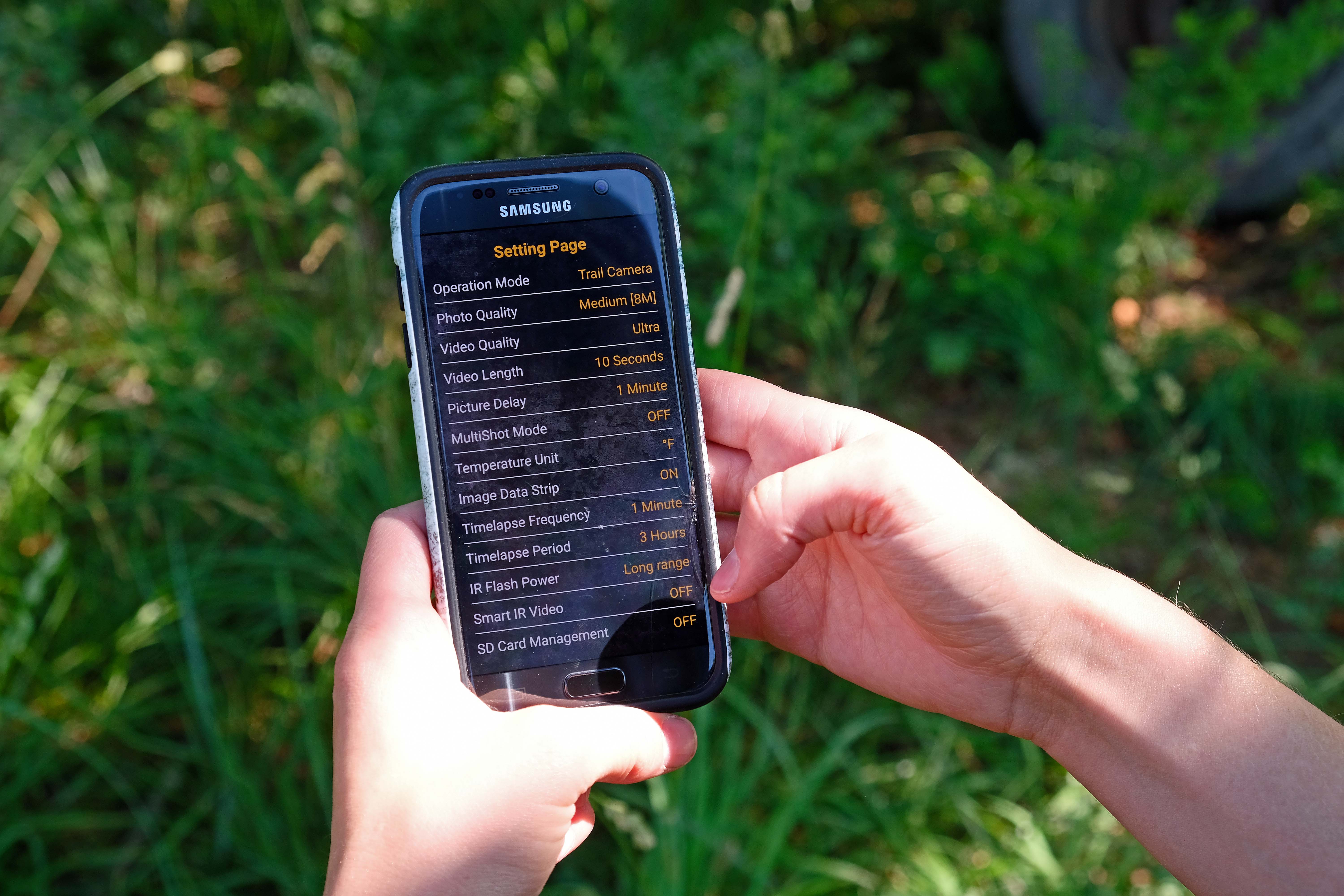
3 – Capable of Holding Up To 128 GB Micro SD Card
I wanted to point out this feature for 2 reasons:
1) The camera also features 1080P HD video technology, so having the ability to use an SD card with larger storage capacity means that you can leave the camera out in the field on video mode without having to worry about the memory card filling up in between camera checks.
2) If you wanted to set up your Defender 850 in a location that you may not hunt or visit often, once again you can rest assured that most likely your memory card will not be full by the time you make it there to hunt or check the camera. This is perfect for those whose hunting property is a long distance away, or if your favorite hunting location isn’t easily accessible.
Whether I end up getting a deer this season or not, I already feel like I am one step further with my hunting game plan than I was this time last year, and that is due to the unique features on the Browning Defender 850 that allow me to hunt smarter, not harder.
By Andrea Haas
Andrea Haas is a Pro-Staffer from Missouri who enjoys hunting deer, turkeys, and upland birds. She is also the founder of the Huntress View, an organization formed to help strengthen the ever growing community of women hunters
St. Jude Heroes Event
August 27th, 2017 by BTC Editor
Chances are, either you or someone you know has been affected by childhood cancer. One of my young, distant cousins passed away from cancer recently, as did the son of one of my co-workers. It breaks my heart to see children suffering from cancer, but thankfully St. Jude Children’s Research Hospital is there to help treat and cure these children and to help support their families during the treatment process.
Families never receive a bill for the treatment their child receives or for their travel expenses, housing or food. This is made possible, in part, by fundraising events like the St. Jude Heroes event in Poplar Bluff, MO that I attended a couple weekends ago, sponsored by Browning Trail Cameras. This is an annual 2-day event featuring a VIP Party, silent auction and meet-and-greet with outdoor celebrities on Day 1 and a benefit archery shoot and silent auction on Day 2.
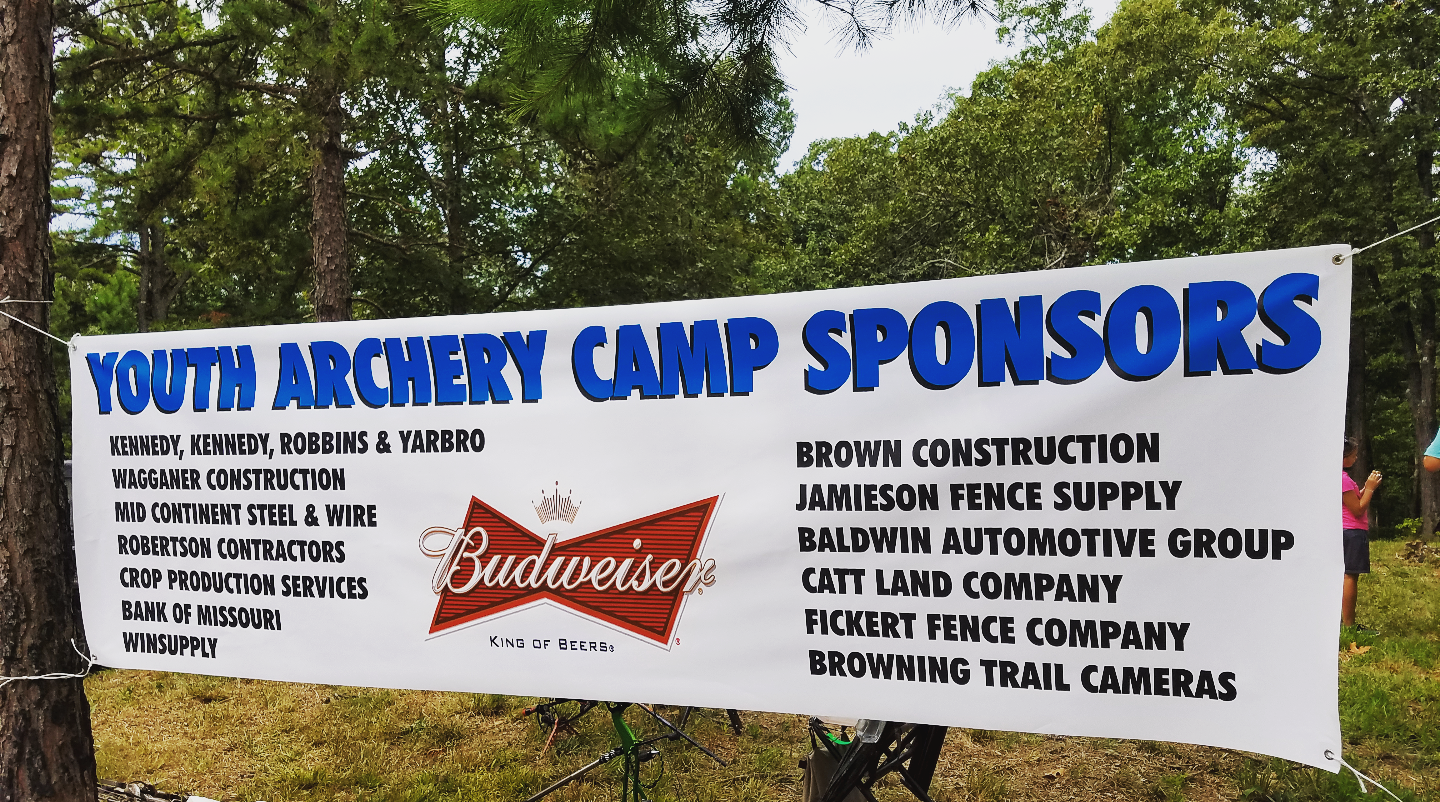
This year the VIP Party included dinner & drinks, live and silent auctions, raffles, a meet-and-greet with outdoor celebrities (including Browning Trail Camera team members Don & Kandi Kisky of Whitetail Freaks, Jon & Gina Brunson of Addicted to the Outdoors, and Derek Dirnberger of The Break TV), and live music from Nate Hosie of Headhunters TV. The best part of the VIP Party was meeting a family that had been affected by and overcome cancer, thanks to St. Jude Children’s Hospital, and listening to their story.
During the VIP Party, there was also a celebrity auction. The outdoor celebrities split up into teams of 2 to compete in a rear-steering tricycle race. Guests had the opportunity to bid on each team and the bidder of the winning team won an AR-15. Don Kisky and Jason Bosaw of the Whitetail Freaks took first place and the proceeds went to St. Jude’s!
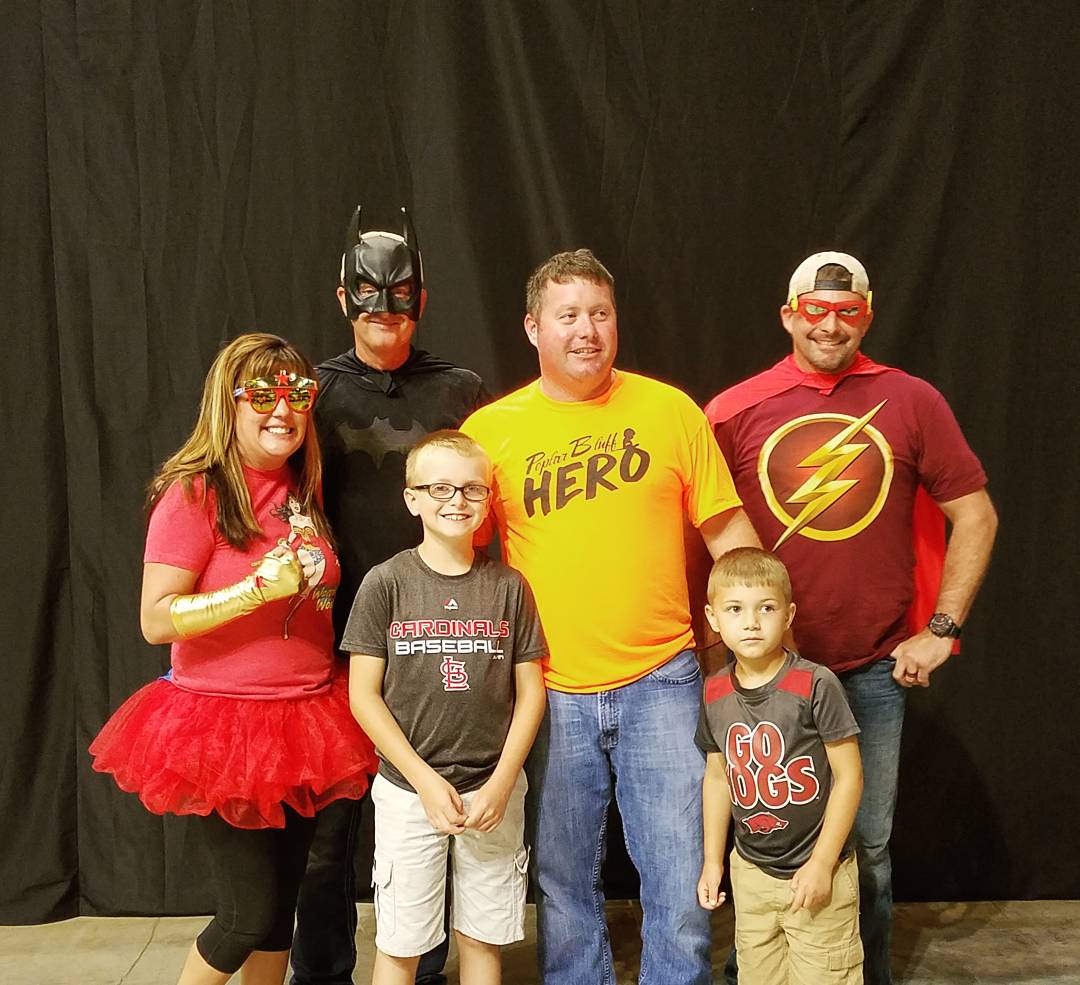
Here’s a Boomerang video clip of Jon Brunson competing in the race:
Day 2’s events included a 3D archery range, a pop up range & tournament, free youth archery camps, Cornhole/Horseshoes/Dunking booth and a silent auction all day. The outdoor celebrities also attended the archery shoot on Day 2 to interact with the guests and participate in some of the 3D shoots as well.
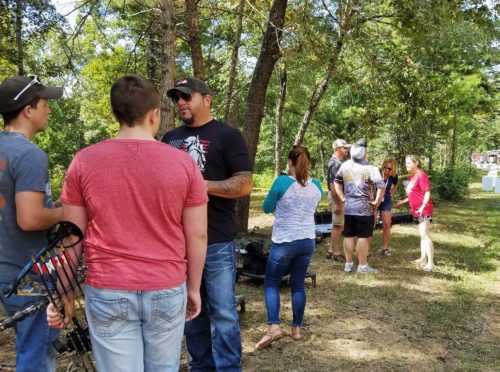
Jon Brunson chatting with guests at the 3-D Archery Shoot on Day 2.
The greatest thing is that ALL of the proceeds from this event go to St. Jude Children’s Research Hospital, and this year the event brought in over $100,000 in donations to St. Jude! We all had so much fun at this event and knowing that it was for such a great cause made it that much better. If you are a hunter, an archer, or if you just have a passion for helping others in need, please plan to attend the St. Jude Heroes event next year in Poplar Bluff, MO and help put an end to childhood cancer!
By Andrea Haas
Andrea Haas is a Pro-Staffer from Missouri who enjoys hunting deer, turkeys, and upland birds. She is also the founder of the Huntress View, an organization formed to help strengthen the ever growing community of women hunters
“Land and Wildlife Field Day”
April 23rd, 2017 by BTC Editor
Making and setting up Wood Duck boxes is not only a great way to get the next generation involved in conservation and wildlife management, it’s an excellent way to gain insight into the nesting and reproduction habits of Wood Ducks, with an ultimate goal of increasing their population. Scott Cronin, a Pro-Staffer from Kentucky, holds an annual event with a local High School called the “Land & Wildlife Field Day”. Junior and Senior High School students in the Wildlife Forestry Programs participate in this field event in which Wood Duck boxes and trail cameras are installed and studied.
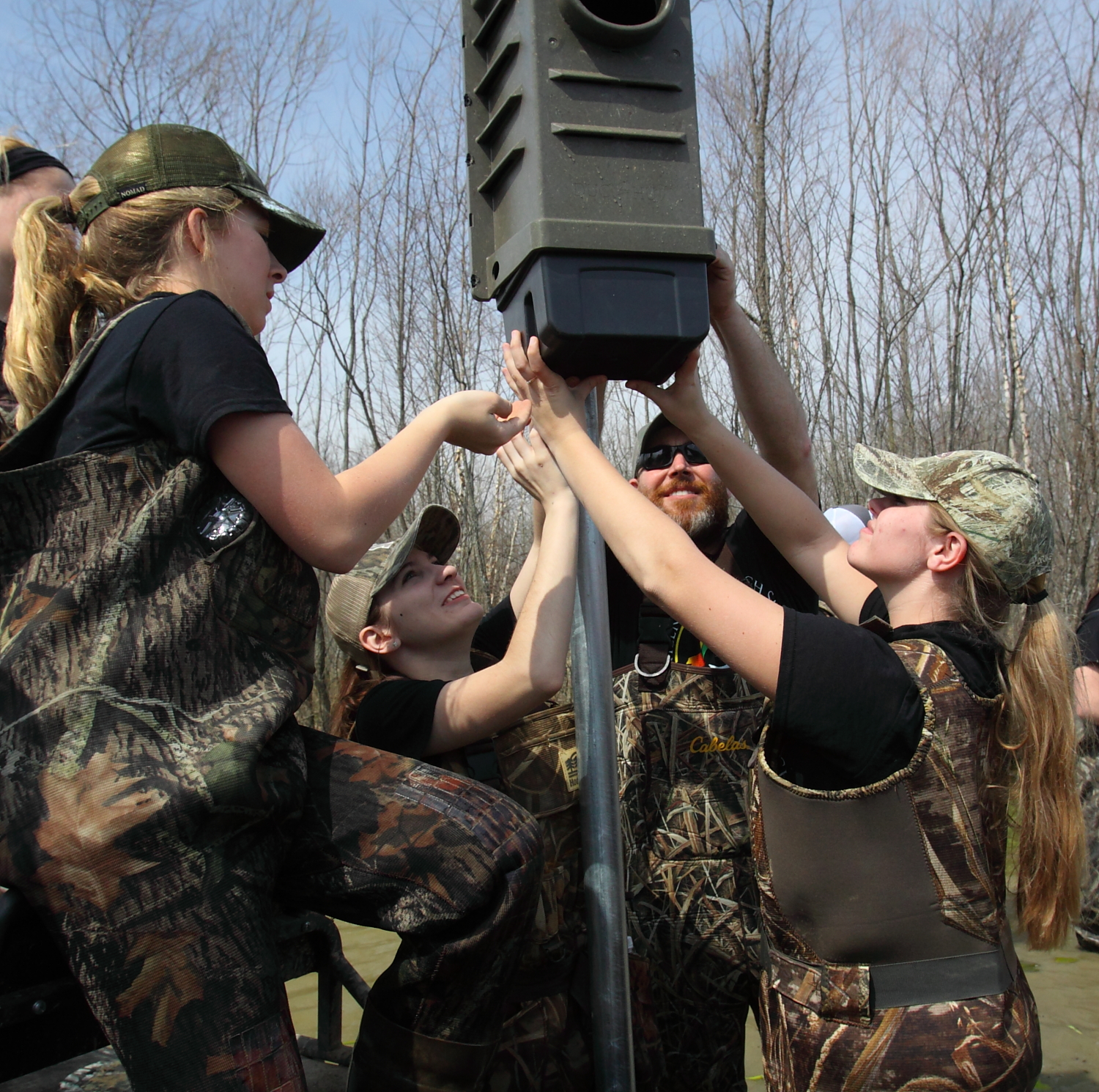
The goal of this project is to pinpoint which locations are best for the Wood Duck boxes, what box styles and designs are the most effective, and the rate of nesting in the boxes. Scott has found that using his Browning Trail Cameras to watch the boxes gives them actual data to use, rather than just going back in a few months to see if there’s any eggs. The project also allows them to spend time with the students, teaching them about using trail cameras as a game management tool to get data and to see how successful the projects are.
Scott has been using trail cameras on this conservation project for the past 15 years, but has been using Browning Trail Cameras exclusively for the past 4 years, for several reasons: the durability, versatility and the camera features. Naturally, the locations of the Wood Duck boxes and trail cameras are very wet (swamp areas, flood timber, etc.) but Scott shares that his Browning Trail Cameras have been very maintenance free and has had very little issues with fog and moisture, which is a common problem with any trail camera in these types of locations.
This year Scott started using the new Browning Strike Force HD Pro, which features an incredible .3 second trigger speed, a 1.5” color viewing screen and an adjustable mount, all of which have been a tremendous asset on this project. Scott shares: “I selected the Strike Force HD Pro based on the fact that we’ve had tremendous success over the past 4 years with the Browning Strike Force, and now that it has the viewfinder and the bracket it makes it so much easier to set up the cameras and pinpoint the exact area that you’re wanting to center your frame on from the start.”
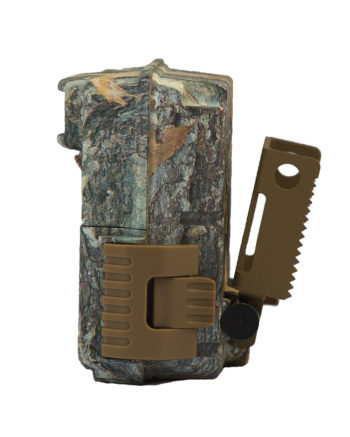
Side view of the 2017 Strike Force HD Pro
Trail Cameras are our eyes in the woods, or in this case the wetlands, when we can’t physically be there. They have been especially helpful on this project since they often go a few months before going back to check on these locations. The “Land & Wildlife Field Day” project is an excellent way to teach the next generation about using trail cameras and Wood Duck boxes as tools to help grow the Wood Duck population. While trail cameras are used most often to aid in hunting, don’t overlook how valuable they can be in collecting data for conservation efforts as well.
Kentucky Afield Magazine was there to cover the event this year. Here are a few more photos from their field day!
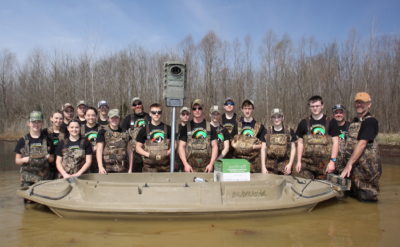
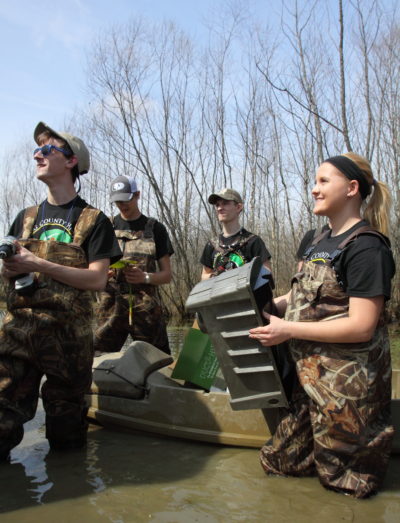
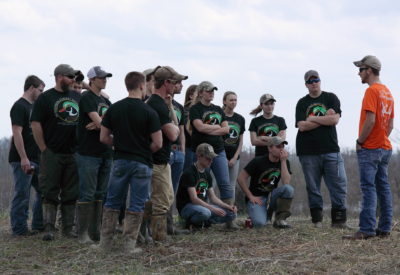

By Andrea Haas
Andrea Haas is a Pro-Staffer from Missouri who enjoys hunting deer, turkeys, and upland birds. She is also the founder of the Huntress View, an organization formed to help strengthen the ever growing community of women hunters.
5 Tips For Bowhunting Turkeys
March 12th, 2017 by BTC Editor
Planning on using your bow to harvest a turkey this spring? If you’ve ever hunted turkeys before then you know it will be no easy task. Hunting turkeys with a shotgun is often enough to drive a hunter crazy, let alone adding the challenge of a stick and string. Successfully harvesting a turkey with your bow is perhaps one of the hardest, yet most rewarding hunts you will ever be a part of.
Browning Trail Cameras Pro Staff members Don and Dan Pickell have been bowhunting for years and make bagging a gobbler with a bow look like a piece of cake.

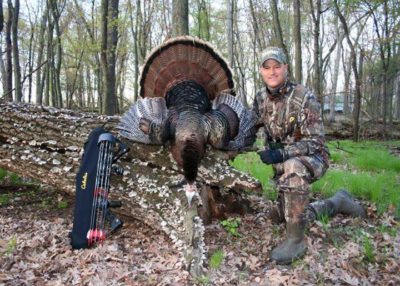
Here are a few of their tips for bowhunting turkeys this spring:
1) Scouting
Spend some time in the woods before season starts so you can be as prepared as possible before opening day. Look for roosting sites, turkey feathers & droppings, feeding areas and travel routes. Once you’ve found some turkey sign or what looks like some good locations, it’s time to hang your trail cameras.
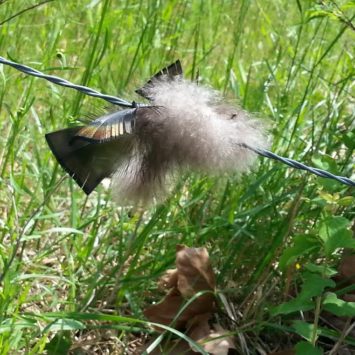
2) Trail Cameras
Get your Browning Trail Cameras out now and keep them out throughout turkey season. Trail cameras will help pinpoint the time of day the turkeys are in certain locations so you know when you should target these specific areas while hunting.
When setting up your cameras, keep the location in mind and set them accordingly. For example, you may want to set your camera on Time Lapse mode while watching large fields or new locations where you aren’t sure where the turkeys are entering or leaving. The camera will take images of the entire field, so you will end up capturing game at 200 + yards away, where a conventional game camera would not normally trigger a picture.
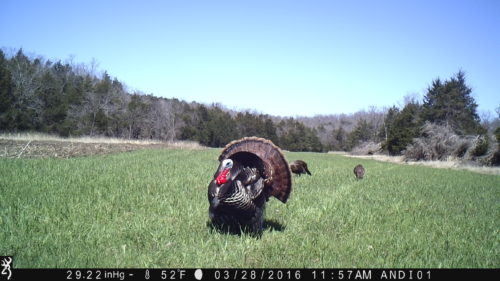
3) Setup
Pattern the birds with your trail cameras and set up your ground blinds accordingly. If they aren’t coming into your call it’s usually best to just sit and wait them out; Remember, you’re hunting with a bow, not a shotgun, so run and gun is a lot more difficult. More often than not, your trail cameras will tell you where you need to be. Remember what you learned about their behavior while studying your trail camera photos and stick with that.
4) Decoys
A decoy will often help bring the birds within bow range while keeping their eyes off of you, but we have also had toms skirt our decoys at times. When this happens we usually pull the decoys and set up in a proven spot where we have them patterned with our Browning Trail Cameras and ambush them. It just depends on the bird’s moods.
5) Shot Placement & Recovery
With a shotgun we aim at the bottom of the neck to allow for the pattern to cover both his head and neck. With a bow, we prefer a broadside shot through the wings if possible so an injured bird can’t fly off, making it harder to recover. Whether we use a bow or a shotgun, as soon as a shot is made we go after the bird and get a foot on its head, just in case.
Going into turkey season, it’s best to have a positive outlook and lots of patience! Turkeys are fickle creatures and even having the “perfect setup” is often not enough to harvest a tom. Make sure you’re as prepared as possible ahead of time by scouting with your trail cameras and keeping the above tips in mind. Harvesting a big longbeard with your bow is worth all of the hassle. Stay safe and have fun this turkey season!
By Andrea Haas

Andrea Haas is a Pro-Staffer from Missouri who enjoys hunting deer, turkeys, and upland birds. She is also the founder of the Huntress View, an organization formed to help strengthen the ever growing community of women hunters.
Mountain Lions in Missouri
February 7th, 2017 by BTC Editor
What is one of the neatest things you’ve captured on your game cameras? For Darryl Esthay from Louisiana it was photos of a mountain lion on a piece of property he hunts in Missouri, a very rare sight for the Show-Me-State! Being from Missouri myself, I know how big of a deal it is to the residents here to learn that there are mountain lions in our state. I contacted Darryl to get the story behind the photos and to find out what is involved in reporting a mountain lion sighting in Missouri.
The Story
According to Darryl, he went to his hunting property in Oregon County, Missouri for his final deer hunt of the year on 1/02/2017. That afternoon, he pulled his SD cards on his Browning Strike Force Trail Cameras and found this series of mountain lion pictures on one of them. He then contacted the Missouri Department of Conservation (MDC) who sent their Mountain Lion Response Team to investigate the “possible” sighting, later officially confirming that this indeed is a mountain lion.


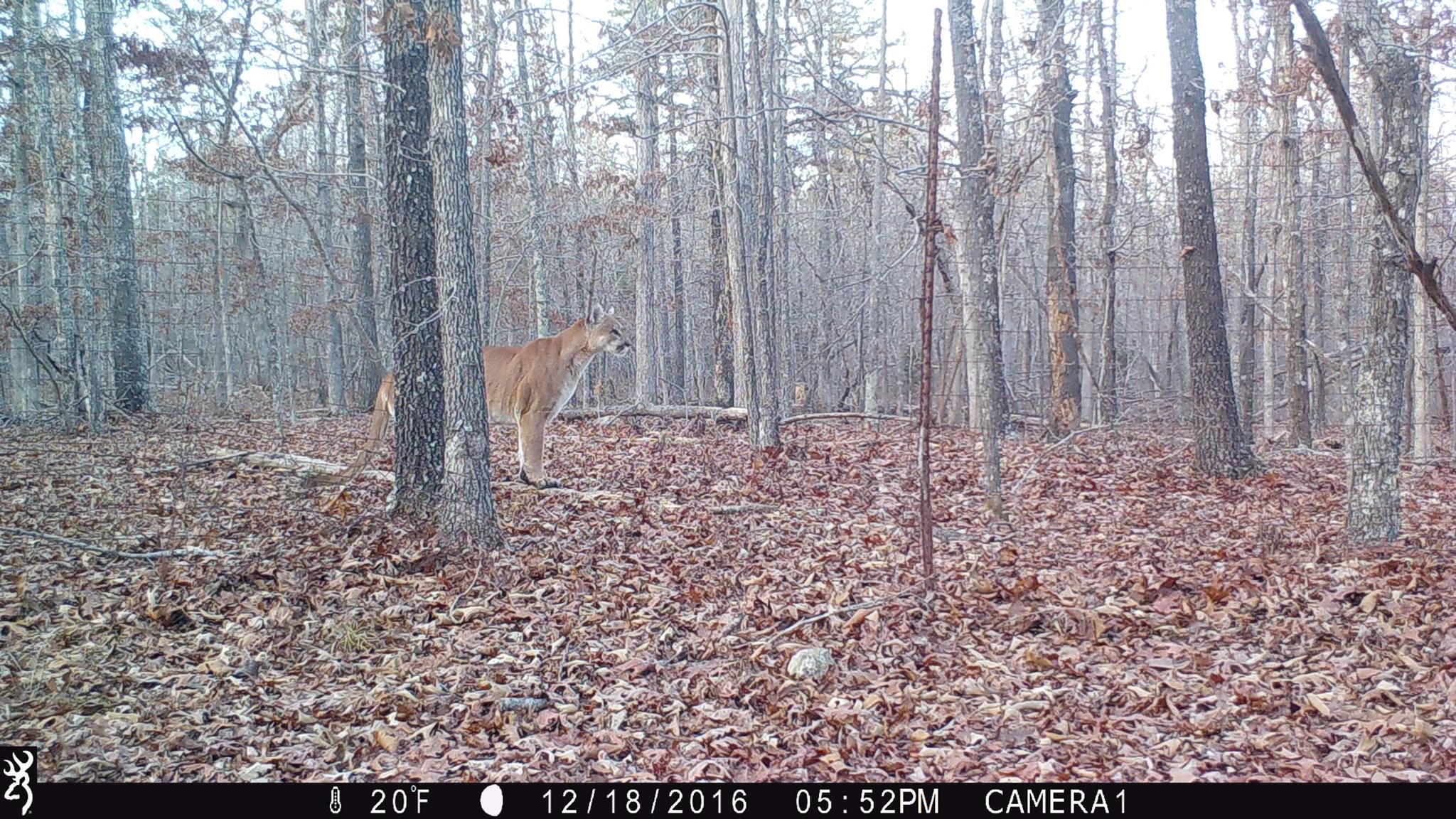
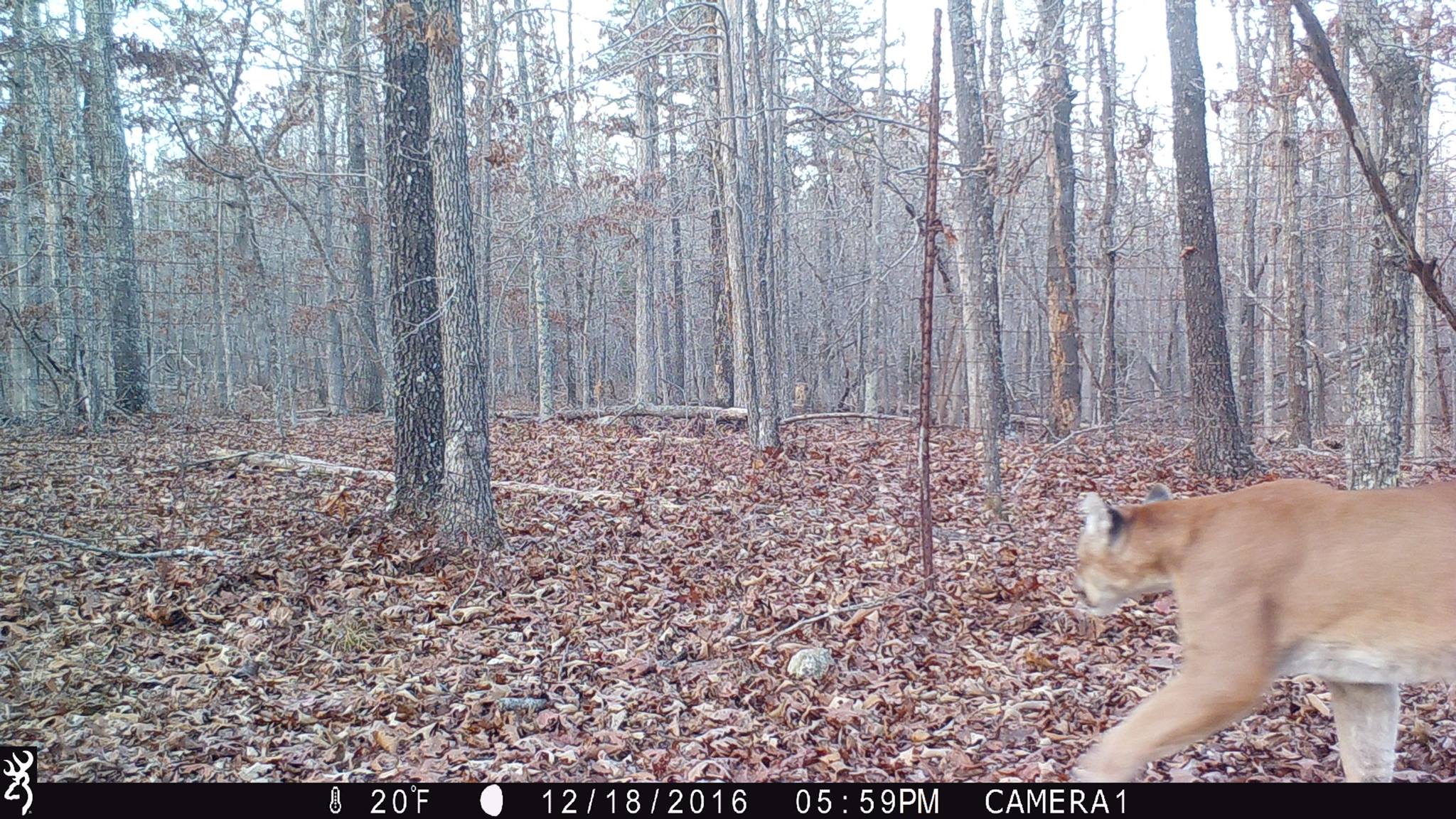
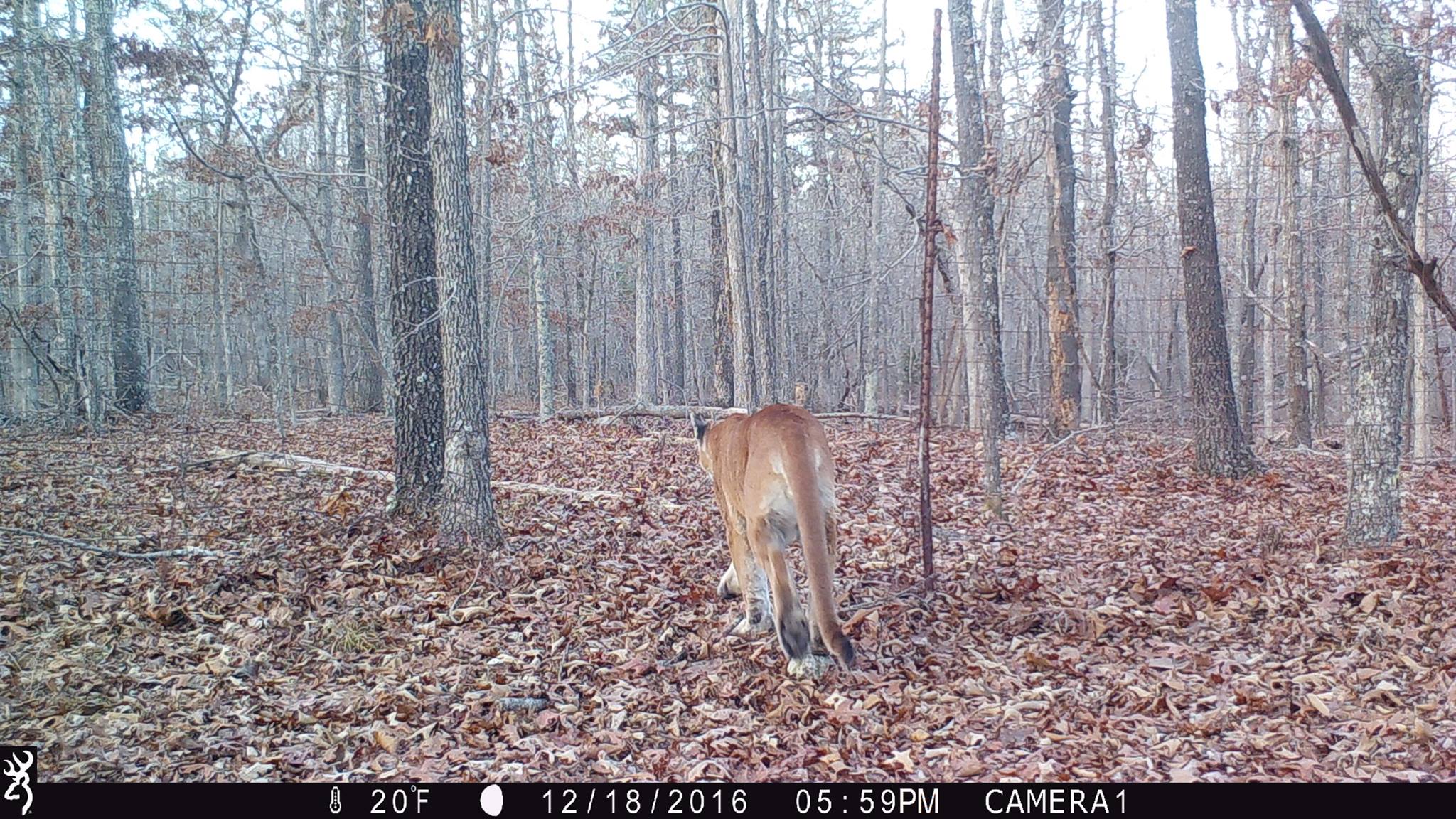
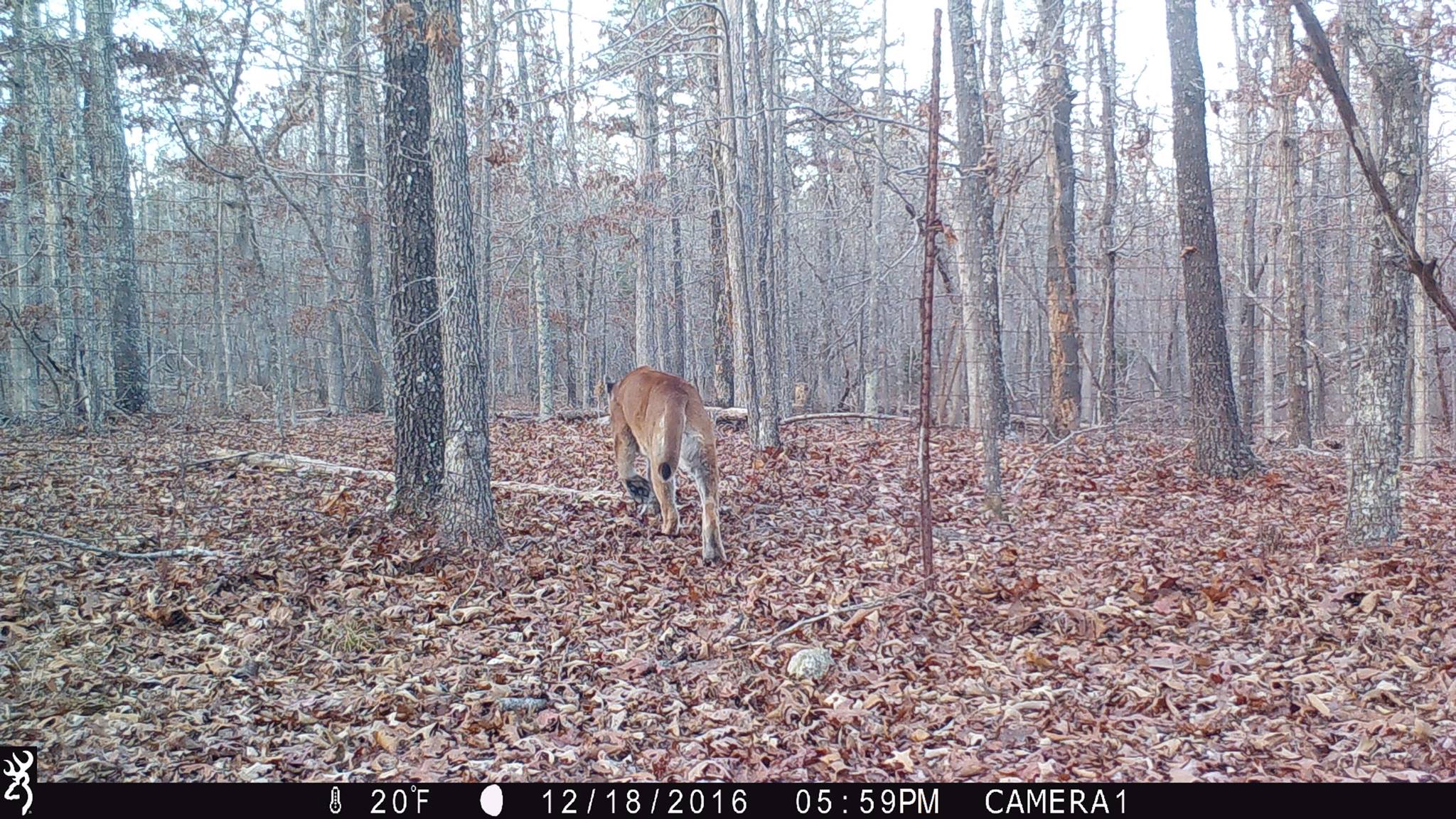
Darryl states that they were very thorough in gathering their evidence. They asked to see the original SD card that the mountain lion pictures were on, which Darryl presented to them. They saved the mountain lion photos, as well as the two photos before and the two photos after, to help support their evidence.
Next, the Mountain Lion Response Team asked to see the location that Darryl’s Browning Trail Camera was hung. They spotted the different landmarks that were in the photo: the fence, the rock & the log, and verified that it was the same location that the mountain lion pictures were taken. Darryl states that the “high fence” that is in the photos is actually an old fox pen from years ago that was there when he bought the property. He has cut 5-6 foot holes all along the fence to allow wildlife to pass through, as you can see in the photos.
After verifying the location was the same as in the photos, they then looked for mountain lion hair, scat and tracks in the area, but so far none were found. All of the gathered evidence was then presented to the entire Mountain Lion Response Team and was later officially confirmed as a mountain lion sighting in Missouri.
About a week later, Darryl also got a video of a gray fox, and what could possibly be another mountain lion in the bottom right-hand corner. The Mountain Lion Response Team looked at this video as well but they were not able to confirm that it was a mountain lion. They advised Darryl that once all the evidence is gathered after investigating a possible sighting, it is then voted on by the Mountain Lion Response Team. Each member of the team must vote “yes” in order for it to be a confirmed sighting. Even if the majority of the team believes it is, it’s not officially confirmed unless 100% of the team is positive that what they are looking at is a mountain lion.
(Click here to see a list of all of the confirmed sightings in Missouri.)
Other Evidence
Trail camera photos aren’t the only recent evidence of mountain lions in Missouri. According to an article in the Springfield News-Leader dated 1/27/17, the first confirmed female mountain lion in Missouri since 1994 killed an elk in Shannon County. Here are a couple of excerpts from the article:
“DNA from the cat’s saliva showed it likely originated from the Black Hills of Wyoming and South Dakota and northwest Nebraska. Conlee (A furbearer biologist for the MDC) said it’s a significant find because female mountain lions typically don’t travel long distances, preferring to live and hunt near where they were born.”
“There’s no indication the female mountain lion is staying in Shannon County, Conlee said, and it’s possible the cat will continue moving…Conlee emphasized there is still no evidence that Missouri has a breeding population of mountain lions.”
According to the Missouri Department of Conservation, there have been 68 confirmed mountain lion sightings in Missouri since 1994, becoming more common in recent years. This could be due to the growing number of mountain lions out west, making their way into Missouri, or could possibly be due to an increasing number of trail cameras out in the woods.
I have lived in Missouri all my life and I have never personally seen a mountain lion or gotten pictures of one on my game cameras, though I have heard stories of our neighbors seeing some behind our home for years now. My husband said his great-grandfather told his family he was riding his horse on our property one day and the horse he was on was attacked by a mountain lion. How true that is we may never know!
Part of the excitement of running trail cameras is never knowing what you’ll get pictures of. If you’ve already taken down your game cameras for the year, I suggest hanging a few back up to see what types of wildlife you get pictures of! Although it is still extremely rare, mountain lion sightings are becoming more common in Missouri. If you think you’ve seen one and have a good amount of evidence, follow this link for instructions on how to report it to the Missouri Department of Conservation.
By Andrea Haas
Andrea Haas is a Pro-Staffer from Missouri who enjoys hunting deer, turkeys, and upland birds. She is also the founder of the Huntress View, an organization formed to help strengthen the ever growing community of women hunters.
Wild Game Thanksgiving Dinner
November 13th, 2016 by BTC Editor
It’s that time of year again, where we sit down with family and celebrate Thanksgiving. It’s a time to reflect on all that we are thankful for. For a hunter, this includes the memories in the field and the wild game that was harvested. In my opinion, there’s no better time than Thanksgiving to serve wild game. If you prefer a more non-traditional Thanksgiving dinner, here are a couple of simple recipes to try that you and your family are sure to appreciate.
The main course and side is a dinner kit from Hunter Gatherer Game Dinners.
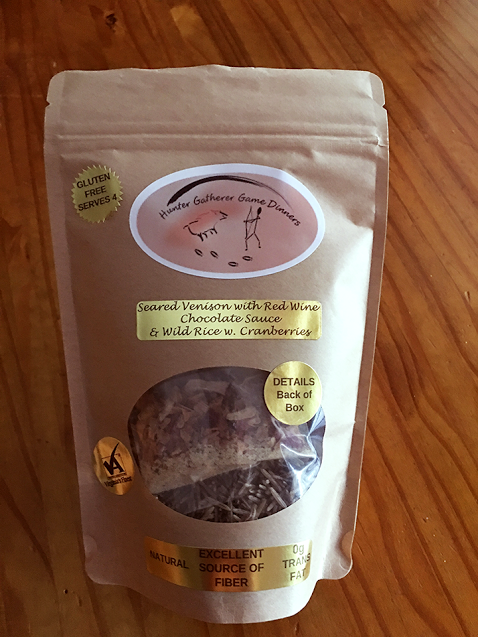
[Main course]
Seared Venison with Red Wine Chocolate Sauce
INGREDIENTS
- 12 oz. venison, elk, buffalo, filet mignon or rib eye steak (I prefer venison filet mignon)
- You’ll need to buy:
- 2 oz. pancetta or Italian bacon
- 1 – 8 oz. can low-sodium chicken broth
- 1 stick unsalted butter
- 1 cup Red Wine
- There are seasonings for the meat in individual packets labeled with numbers, as well as step-by-step instructions so it’s super easy to make!
[Side]
Wild Rice with Cranberries
- The wild rice and cranberries are also included in this kit, along with preparation instructions.

[Dessert]
Persimmon Bread
Most know that deer love to eat persimmons, but have you ever tried one? If you’ve ever tried one before they are ripe you probably think cooking anything with persimmons sounds like a bad idea, as they are awfully bitter. But once they turn ripe they are sweet and are great to use for pies, breads, cakes and cookies. Once they turn a purple/gray color and get soft they are ready for picking, usually after the first couple of frosts.
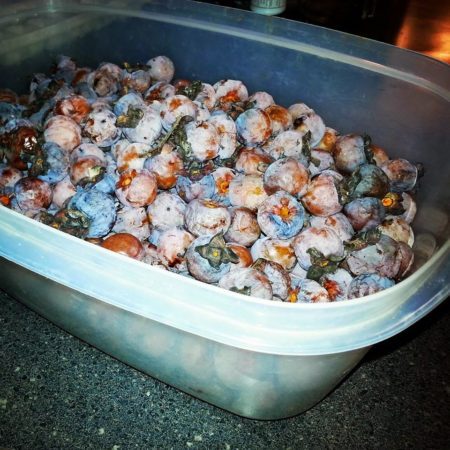
This recipe is my pumpkin bread recipe, but I swapped the 15 oz can pumpkin for 15 oz of persimmon pulp. To me, ripe persimmons taste very similar and have the same consistency as a pumpkin. To get the pulp you will want to smash the persimmons into a bowl through a cone shaped collander, this way you don’t get the skins or seeds in the pulp. We picked these and after smashing all of them through the collander we probably have about 4-5 cups of persimmon pulp. I put the pulp into zip-loc baggies, about 2 cups per baggie, and store them in the freezer until ready to use for cooking.
- 3 cups sugar
- 1 cup cooking oil
- 4 eggs
- 3 1/2 cups all purpose flour
- 2 tsp baking soda
- 1 1/2 tsp salt
- 1 tsp ground cinnamon
- 1 tsp ground nutmeg
- 2/3 cup water
- 15 oz persimmon pulp
- Preheat oven to 350 degrees. Grease 2 loaf pans.
- In an extra large mixing bowl, beat sugar and oil with electric mixer on medium speed. Add eggs & beat well; set sugar mixture aside
- In a large bowl, combine flour, baking soda, salt, cinnamon & nutmeg. Alternately add flour mixture & the water to sugar mixture, beating on low after each addition until just combined.
- Beat in the persimmon pulp.
- Spoon batter into pans
- Bake 55-65 minutes or until a toothpick comes out clean
- Cool in pan on wire rack for 10 minutes. Wrap & store overnight before slicing (The recipe calls for this, but I never do this. I absolutely love warm bread right out of the oven!)
By Andrea Haas
Andrea Haas is a Pro-Staffer from Missouri who enjoys hunting deer, turkeys, and upland birds. She is also the founder of the Huntress View, an organization formed to help strengthen the ever growing community of women hunters.
D.E.E.R. Project
October 9th, 2016 by BTC Editor
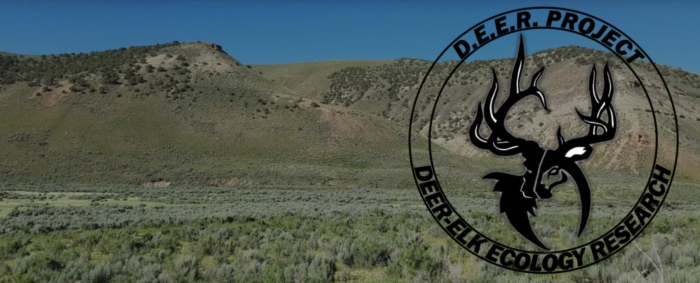
D.E.E.R. Project
By Matthew Hayes
Mule deer have a complex history throughout the western United States. In the days of the early settlers and pioneers, mule deer were relatively scarce; many trappers and explorers reported only occasional sightings of mule deer whereas other big game species were regularly observed. At the beginning of the 20th century, mule deer populations had been drastically reduced in number due largely to overharvest, market hunting, and overgrazing. Protections were put in place in the early to mid-1900s, eventually leading to ideas such as the North American Model of Wildlife Conservation, which was followed by a dramatic increase in mule deer populations. Mule deer populations peaked between the 1940s to the early 1960s throughout the western US.
Fast forward a few decades to the present day. With a lens to examine population fluctuations over the past 40+ years, a clear pattern has emerged. Populations, at least in Wyoming, appear to go through cyclical periods of increase followed by sharp declines. In reviewing literature and historical documents, concerns about mule deer populations tend to follow huge decreases in populations and when they subsequently rise, research and management become less important. Another point that seems clear in Wyoming is that although we have this see-saw in population numbers, there is a general declining trend since at least the 1970s. On average, Wyoming has seen a roughly 20% reduction in mule deer populations.
The population swings, and general decline, of mule deer since the 1970s has been difficult to understand. A variety of factors have been proposed to explain these declines, including: overharvest, harsh winters, habitat, drought, predation, disease and burgeoning elk populations. Managers have long noted that many areas that mule deer inhabit face different pressures and that populations are likely being driven by a variety of factors. All factors are not influencing populations in each portion of their range. This complication has meant that gaining a more complete understanding of reasons for fluctuations or stagnant growth in population numbers has been elusive. Without a solid understanding of the why and how associated with population fluctuations, it is incredibly difficult for targeted management to be beneficial.
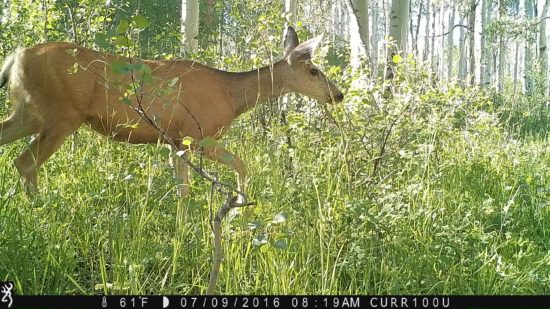
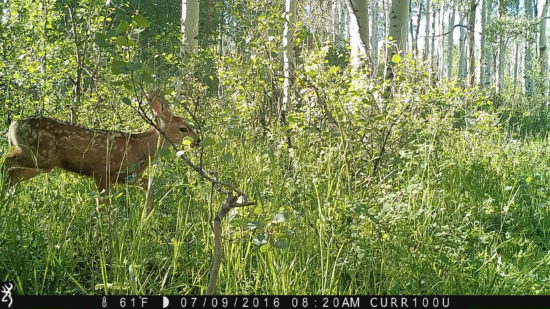
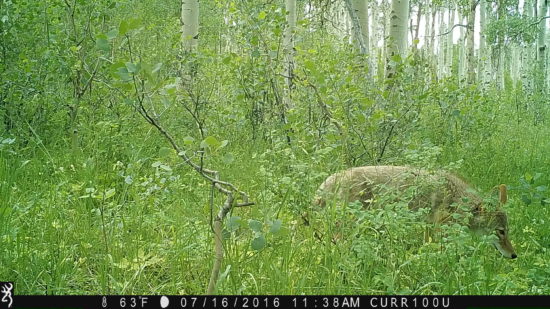
Researchers and managers have made great strides to better understand mule deer ecology and factors relating to their survival and reproduction. In the early 2000’s Global Positioning Systems (GPS) became small enough to fit onto a collar sized for ungulates. Since then, studies have been conducted examining migration and use of the landscape in summer and winter. The effects of drought and shifting precipitation regimes have been investigated as well as determining when, where and how animals are dying. Wyoming has been at the forefront of this research and has helped to better understand the ecology and management of mule deer. A key ecological process that has remained poorly understood are the interactions between mule deer and elk (though some work has been done at the Starkey Experimental Forest).

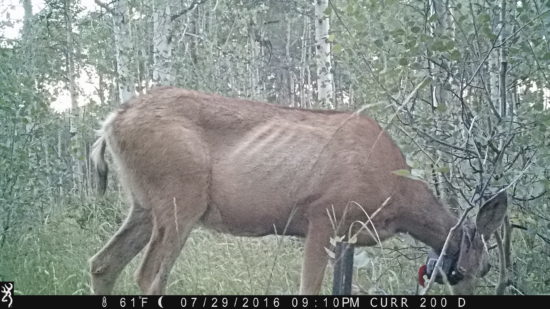
Mule Deer with GPS tracking collar.
Both mule deer and elk are highly cherished big game species. Wyoming and her residents rely on these animals for hunting, tourism and as a part of our cultural heritage. Nevertheless, at the same time those mule deer populations have generally declined, elk populations have increased dramatically across the same geographical range. Managers and researchers have long wondered if mule deer and elk could be competing for space and resources but, until recently, the ability to study these interactions was almost impossible. Potential for interactions between these 2, highly valued species to affect one another’s abundance has been a bit of a conundrum for decades, probably given the challenges associated with addressing such a complex question. The Deer-Elk Ecology Research Project (DEER) was ultimately incepted out the need to unravel the head-scratching complexities of poor performing mule deer populations, while a similar big game animal continues to grow in the same country.

Population sizes for Deer

Population sizes for Elk
The DEER Project, located in the Greater Little Mountain Area of southwestern Wyoming, aims to increase our understanding of both mule deer and elk. This project is examining parturition timing and location of mule deer, mortality and recruitment of fawns, nutritional condition of adult female mule deer, summer diet overlap between elk and mule deer, space use, recruitment of male mule deer, survival, migration, and dispersal. We also are implicitly examining winter severity, habitat use, precipitation patterns, predation and disease. One of the greatest strengths of this work is the rigorous monitoring of both mule deer and elk in the same system. Many studies prior have examined one species or the other with inference to supposed interactions, but the DEER project will be able to analyze these interactions at a much finer scale. Another added benefit of this project is that it occurs in a high-desert system—an ecosystem ubiquitous throughout Wyoming but less studied compared to high-elevation systems. Far from being a one-off or unique system, the results from this work will be applicable to mule deer and elk throughout their shared range.


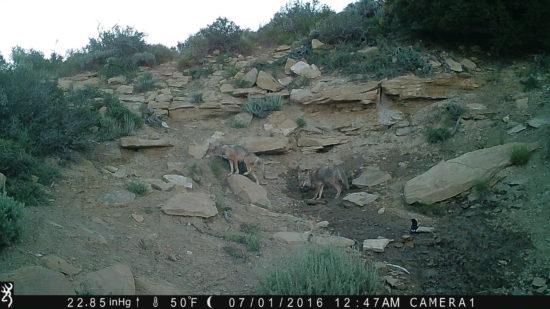
Future articles will focus on updates from the DEER project. You can follow along with the project, donate and subscribe for updates at www.deerproject.org.
The Western Association of Fish and Wildlife Agencies (WAFWA) has explored the issue of mule deer decline in depth and has published a very approachable book on the topic; you can check out the website at www.wafwa.org and navigate to the Mule Deer Working Group for more information.


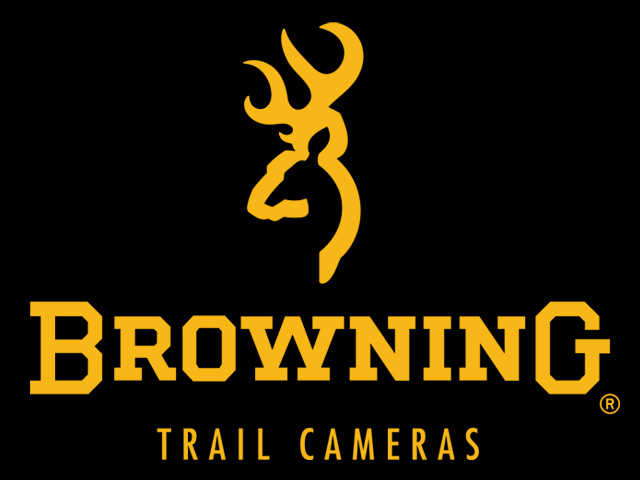
FOR MORE INFORMATION: 
UNIVERSITY OF WYOMING
Kevin Monteith 307-766-2322 kevin.monteith@uwyo.edu
Matthew Hayes 307-766-5417 mhayes1@uwyo.edu
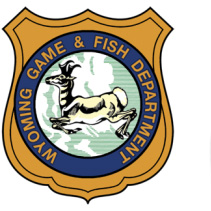
WYOMING GAME & FISH DEPARTMENT
Patrick Burke 307-875-3223 patrick.burke@wyo.gov
Mark Zornes 307-875-3223 mark.zornes@wyo.gov
Kevin Spence 307-875-3223 kevin.spence@wyo.gov
Five Things I Learned Going Rural
September 25th, 2016 by BTC Editor
Five things I learned going rural
By Kristen A. Schmitt
A few years ago, we moved away from the city, trekking 14 hours east of Detroit to the rural mountains of Vermont. My husband’s job brought us out that way and, while I was looking forward to the change, my previous life experiences didn’t really prepare me for the switch. I didn’t grow up camping, hiking, or hunting. In fact, my entire outdoors experience revolved around sidewalks, bicycles and complaining. Fast forward to 2016 and I not only spend at least 50% of my day outside (no matter the weather), but I’ve channeled my newfound enjoyment for the outdoors into writing for a variety of publications about bowhunting, archery, local food and backyard poultry, among other things.
The irony is that before our move, I wouldn’t have recommended going “rural” to anyone. And now? Not only did this move help me break free of my chain-link fence mentality, but it also gave me new knowledge and confidence that I bring to other areas of my life. So, in the tradition of Dave Letterman’s top ten lists, here’s the top five things I’ve learned since going rural:
5 ) Nature can be incredibly surprising.
Our property in Vermont was surrounded by forest, field and water. While we owned roughly 8 acres, the back of the property butted up to an 11-acre pond and the other sides were bordered by hardwood forest. It was more than just a switch from pavement to dirt roads. My nearest neighbors were bobcats (that tried to kill my chickens – twice), porcupines, peregrine falcons, eagles, and hawks; vultures, wild turkeys, juncos and herons. One particular incident involved a few nighttime visits from an ornery black bear interested in our trash.
We now have a 36-acre farm in upstate NY with a similar landscape.
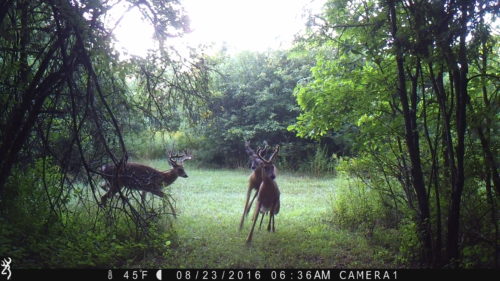
4 ) Chickens are more than just tiny egg machines.
Being able to grab fresh eggs from your own chickens for breakfast is an unbelievable treat. Chickens are easier than any other type of livestock and mine did amazingly well in negative temperatures last winter. We’ve only lost one (to a bobcat); the others are hearty and healthy. As a writer, I work out of my house and have the ability to listen to the chicken “conversation” daily. I read somewhere that chickens have their own language and I can attest to that fact. Sitting on my porch with a mug of tea (or glass of wine, depending on the time of day) to watch them peck and chatter is one of my favorite activities.
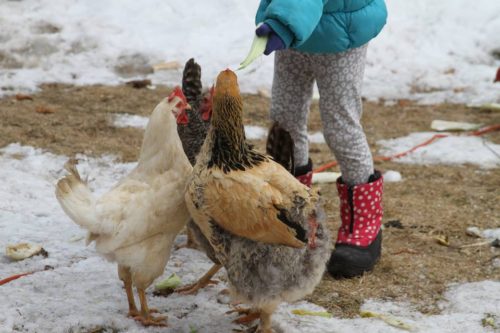
3 ) Eating vegetables that you grow yourself is an amazing experience.
My parents raised me well with a small backyard garden and fresh vegetables daily. But the significance of planting our own fruits and vegetables and maintaining our garden – especially one as large as we have – is priceless. Our young daughter seems way more connected to where her food comes from than I ever was until I became an adult. Picking that first piece of spinach or watching corn plump up on the stalks is exciting each and every time.
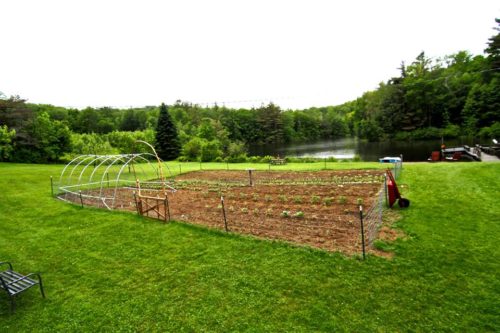
2 ) It takes a lot of wood to heat a house, especially with temperatures in the negatives for weeks. Prior to our move, we relied on city gas to heat our house in the suburbs like the majority of the country. Once we realized we could harvest our own heat from the forest on our property, we had a wood stove installed in the living room. Little did we realize that it takes a lot of wood to keep even a smaller house warm when the temperatures don’t go higher than -16 for weeks. Yet, if I had to do it again, I would. I like being able to see the physical amount of wood I used for heat rather than paying a faceless gas bill. Besides, splitting and stacking wood may not be a ton of fun, but it’s not bad. In fact, it warms you twice: once when you stack the wood; later, when you sit in front the fire.
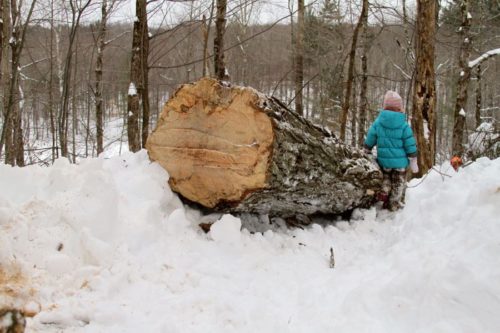
1 ) I’m not helpless.
The main thing that I have learned from going “rural” is that I am not a helpless person. I am stronger than I’ve ever been and my passion and dedication to keeping up with this new lifestyle choice has me learning how to do new things every single day. If we hadn’t moved I wonder if I would feel this empowered in the physical aspects of life as well as the mental. This move has changed me for the better – and I can’t imagine ever living anywhere where I can’t see the stars.
Kristen A. Schmitt writes about wildlife, sustainable agriculture, environmental issues and the outdoors. Her work has appeared in National Geographic, Fast Company, Audubon, Eating Well,USA Today, Hunt & Fish and others. Follow her @Kristen_Schmitt.
Jason Bosaw of Whitetail Freaks – 9/11 Interview
September 11th, 2016 by BTC Editor

BTC: Do you recall where were you and what you were doing on 9/11 when you heard about the terrorist attack? What type of impact did those events have on you as you watched them unfold?
JASON: Yes, I remember exactly where I was and what I was doing. I was working on the grain dryer at the farm. I was just very surprised that something of that magnitude could happen on American soil.
BTC: We understand that you are very committed to serving your community as firefighter. How challenging is it to manage both your farming and your hunting when you could get a call to respond to a call at virtually any given moment?
JASON: I am very committed to my job and my service as a firefighter, as well as to hunting. I am on call virtually 24 hours a day but my job and the firefighting come first. Balancing the two is sometimes difficult, but my willingness to help someone or their property comes to the forefront.

BTC: In your work with the Fire Department you have probably learned to stay calm and focused high stress situations. Has this helped you out at all in the moment of truth to keep from getting buck fever?
JASON: No matter how calm I may be able to stay at the response scene, it is nothing like when a big buck walks out in front of me. My heart still wants to beat out of my chest and my adrenaline level is sky high. I don’t think I will ever be able to contain that. They are two totally different scenarios.
Jason is one of the original Whitetail Freaks and counts his family and serving his community among his passions outside of his pursuit for the next great whitetail he encounters…
Ken Haas of Whitetail Freaks – 9/11 Interview
September 11th, 2016 by BTC Editor
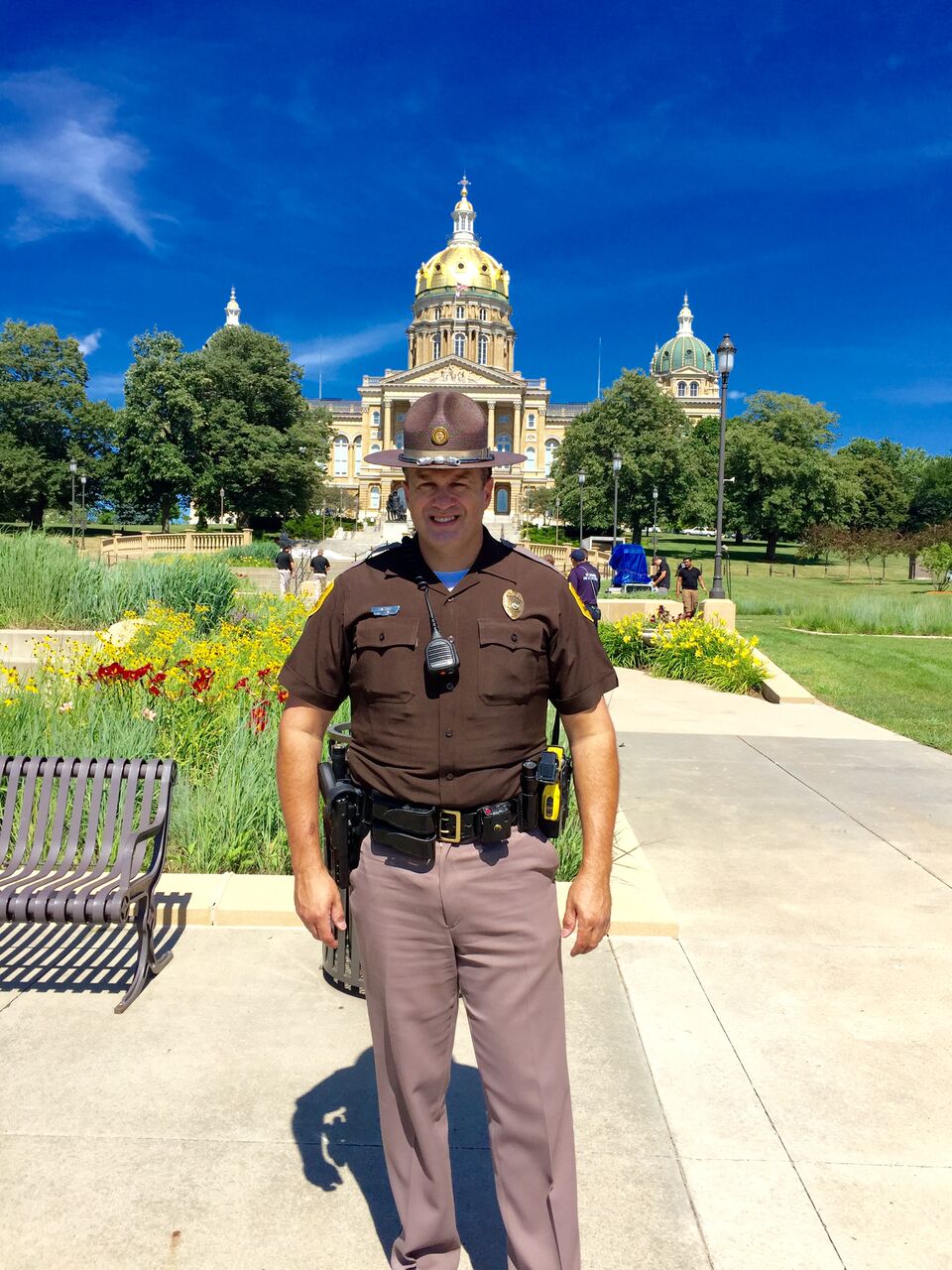
BTC: Do you recall where were you and what you were doing on 9/11 when you heard about the terrorist attack? What type of impact did those events have on you as you watched them unfold?
KEN: I was sitting in a grocery store in Council Bluffs, Iowa eating breakfast with two other Troopers while the news was on. We all watched in utter disbelief as the second plane hit the tower. All of us there were prior military and we all had the same gut wrenching feeling that we were under attack and felt very helpless watching the entire event unfold. I remember that day being very quiet and the airways going quiet as all air traffic had been grounded. Living equal distance from Offut Air Force Base and Omaha Eply Airfield it was eerily quiet. It was a huge surprise to see a plane I knew well fly by, that being Airforce one descending into Offut Airforce Base, which was no doubt bringing the President to the center of the country for safety.
As our soldiers continue to fight overseas, it is our job as Peace Officers to protect our country’s border to border against foreign and domestic terrorists. Extremist groups are a constant threat and the uniformed officer, sometimes referred to as “The Thin Blue Line”, are without a doubt this country’s greatest assets when preventing, disrupting and deterring future acts of violence and terrorism.
Few people know that terrorism is funded in part by the sale of drugs. The exploitation of the United States and its unfortunate appetite for elicit and illegal drugs is problematic when we spend billions of dollars on heroin that has been imported from overseas. I mention heroin first because of the horrible impact it has on our people, but I do not disregard the impact of the other drugs that are imported as well. As you start to see the larger picture of what is happening, you will understand that the facts of our purchasing these illicit drugs is devastating. That same money used from the sale of drugs will then go back into the pockets of terrorist organizations, allowing them to continue to fund their attacks on the United States and the rest of the world.
As with anybody that watched the unfortunate events unfold on September 11th, that day will never be forgotten. The loss of life, the bravery of the firefighters, the police and other EMS personnel, their memories will not be forgotten. It has been my experience that no matter how bad the tragedy, there is always something to be gained from it. In this case, understanding what funds terrorism and that the profit has cost the world thousands of lives lost unnecessarily, has fueled my motivation and the motivation of many others. The world’s worst criminals are the most vulnerable while they are in transit. By intercepting them we are able to make the biggest impact where we can.

Ken and his significant other, Malissa Driver. She’s a flight nurse and they are a family committed to public service.
There are many other stories like mine and my arrest of the terrorist suspect (see newspaper article below) that never see the light of day for security reasons, but rest assured uniformed and plain clothed officers are out every day doing their best to ensure that these major criminals do not travel freely to commit acts of violence throughout the country. I also take great pride in educating police officers from every type of policing agency across the country in criminal and terrorist apprehension training. I have instructed for more than 10 years in the state of Iowa, educating our officers and working for a private program called Desert Snow. I have traveled to almost all 50 states and shared what I have learned with thousands. I also take great pride in hearing about the success stories from the officers following the training.
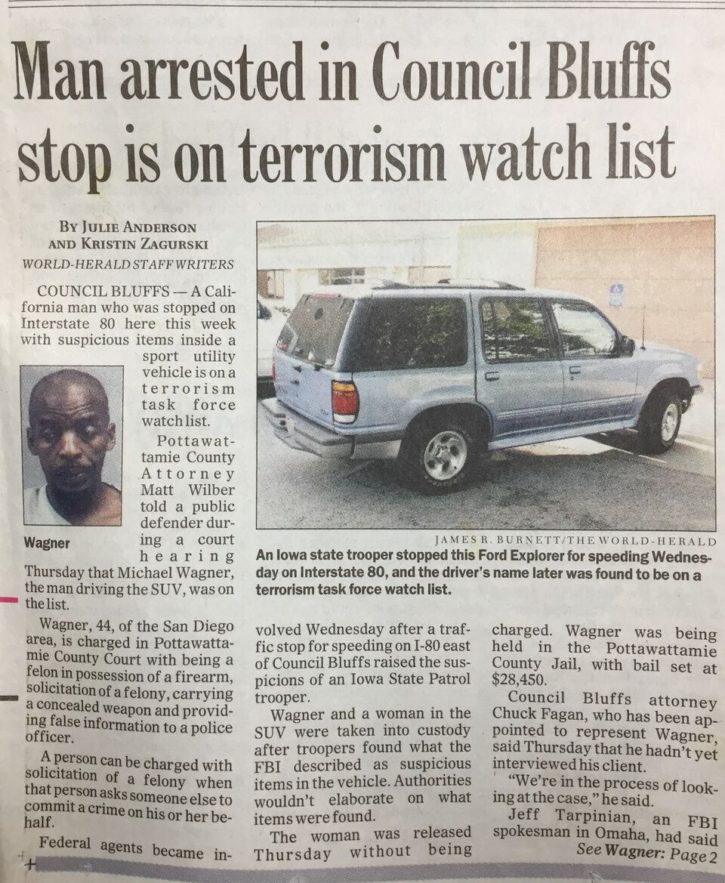
A newspaper article about a terrorist suspect Ken arrested
In 2011 in Glendale, Arizona I was given the distinct honor as being chosen as the United States 2010 and 2011 Bob Thompson Criminal Interdiction Officer of the Year by the United States Department of Transportation, the United States Department of Justice, the Drug Enforcement Administration, the Drug Interdiction Assistance Program, the El Paso Intelligence Center, and the former recipients of this prestigious award. I have very humbly received many awards in my career, but all of them ill in comparison to sharing and continuing to share what I have learned to educate new officers in the same principles for understanding and recognizing when criminal activity is afoot. That impact, no matter how significant, will change the course of someone’s life in a positive way.
Most importantly, I hope people understand that the Peace Officers of this country cannot do the job without the support of its citizens. As I travel and teach officers across the country, the sentiment from those officers and their communities that they serve is the same. The officers are being overwhelmed with gratitude from the good citizens of this country who didn’t understand that this is not just a Peace Officers fight, but this is a fight that includes everyone in our nation. We who serve without a doubt need the support of our communities and the willingness of those people to share information with us when they see things that are not right. I believe it is this cooperation that will continue to keep our country and its people safe. And those that continue to help law enforcement have my unwavering gratitude and appreciation for their continued help and their dedication to the protection of our communities. For those that have gone out of their way, and for everyone that has taken the time and thanked a Peace Officer, fire fighter, or EMS personnel, I thank you!!!! You, are the people that I am talking about.
BTC: What do you feel is the most rewarding about your job as a state trooper?
KEN: The most rewarding part of my job is tough. It has many facets that stretch out in many directions. Being a first responder and saving lives is huge. So is protecting the innocent from crime and the relentless pursuit of major criminals on our nation’s roads. Few people consider the fact that all crime is, at some point, in transit: the people perpetrating the crime, the proceeds of the crime, the tools to facilitate the crime, or evidence of a crime committed.
BTC: What skill sets learned from your job and training have helped you the most as a hunter?
KEN: So you might ask yourself, “What does this have to do with me hunting, and how do I apply what I’ve learned from such a tumultuous career?” It’s simple. It’s the desire to pursue something, in this case a whitetail deer, and becoming a student of the sport. Many people will refer to me as an expert in my field, both as a Peace Officer and as a hunter. Although it is very humbling, I see myself as a student who is always looking for new ways, a better understanding, and never taking for granted the information that is shared.
One instance I’ll share with you happened last year while hunting. As I was sitting in the blind and watching a buck chasing a doe in and out of cover, I watched intently as I always do and enjoyed watching the doe try to elude the buck. Soon as the buck lost sight of the doe and he could no longer see her he employed a tactic that was not only smart, but something that I had never seen happen before, or at least understood its purpose. The whitetail buck started to stomp his foot and blow in the same alarming mode as if he was to have spotted or smelled some type of danger. I immediately suspected that he had caught our wind and could possibly smell us. So I checked the wind direction only to be reassured that it was correct and the chances of that buck smelling us was nonexistent. That buck taught me that he would employ the same tactic that he would use to alarm deer of danger to get the doe to run from heavy cover where she was hiding so he could continue to pursue her. This was the first time I had ever seen this activity and understood what was happening.
At the end of the evening I immediately called Don Kisky to talk to him about what I had seen and ask him what his opinion was and what he thought about the encounter. After a short discussion, Don had told me that he had just seen the same behavior this year. He had never seen it before but had the same concern I did, that the deer actually had smelled or seen something that made the deer alarmed. We both enjoyed a good laugh as I stated to Don, “I might have taught Don Kisky something”. And knowing Don Kisky, that’s next to impossible when it comes to hunting whitetail deer. Really we just shared an observation that we both learned from.
So how does my career pertain to whitetail deer hunting you might ask? Simple. It’s the same perseverance, it’s the same willingness to learn and continue to learn, and a never quit attitude that keeps me going. It’s also tradition, a strong sense of brotherhood, and it’s something I love to share with my children. My children understand the “circle of life” and the life lessons that we have had the privilege to enjoy together. They understand that hunting isn’t a right, it’s a privilege, one that we enjoy along with many other privileges. All of those privileges came at a very high cost and I feel very humbled and privileged to be able to share with many two of my greatest passions. To quote Lee Greenwood, “And I won’t forget the men who died that gave that right to me”.
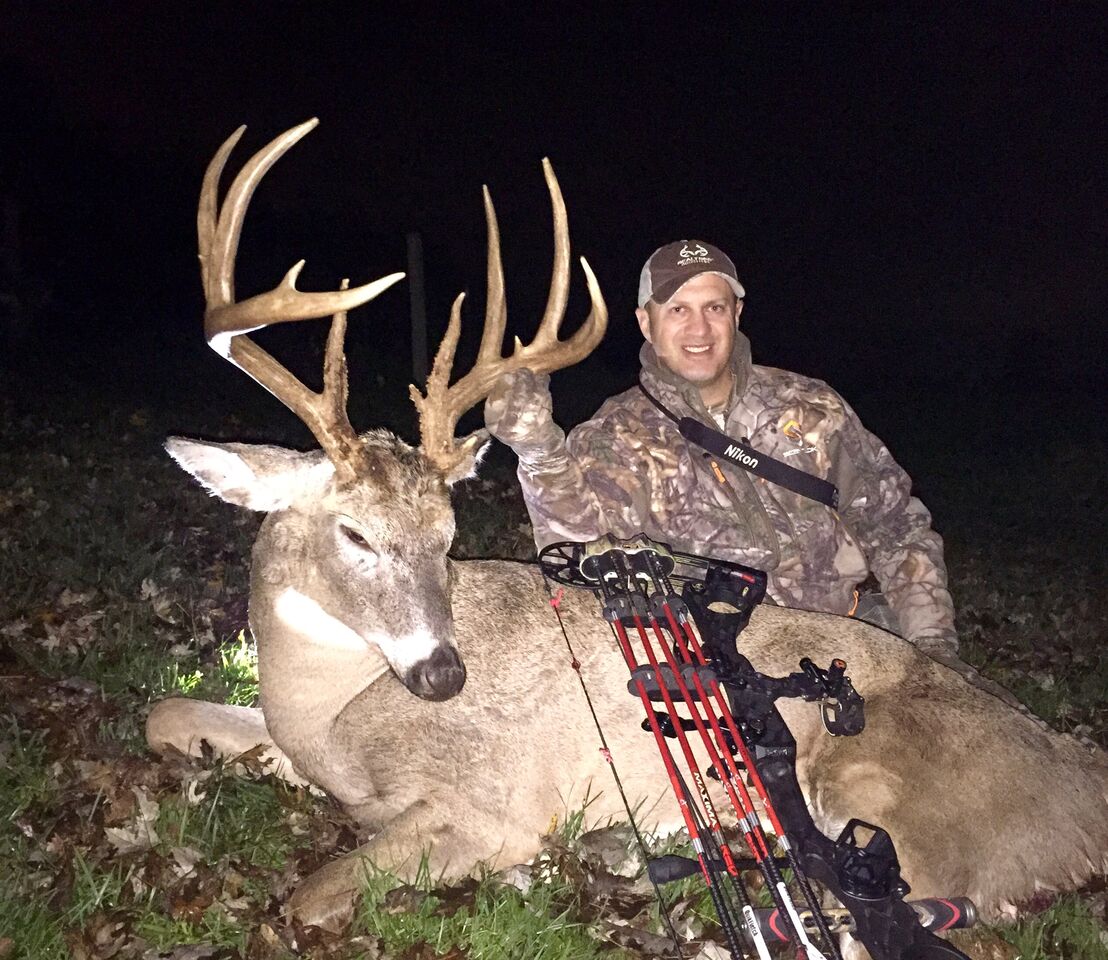
One of Ken’s 2015 bucks
Trooper Kenneth W. Haas #345 Iowa State Patrol
Ken Haas is a native of Omaha Nebraska and lifelong resident of the region. Upon graduating from Millard South High School in 1990 Ken joined the Army National Guard, honorably serving for six years.
Ken received a Bachelor of Science in Criminal Justice from the University of Nebraska-Lincoln in 1996. While working on his B.S. degree, Ken worked as an Intern for both the Nebraska State Patrol and Lincoln Police Department, affirming his desire for a career in law enforcement.
Ken joined the Iowa State Patrol in 1996 and is a 19 year veteran as a State Trooper. Ken served as the Iowa State Patrol Intelligence Officer in 2012, receiving a secret security clearance and was instrumental in implementing the department’s Suspicious Activity Reporting (SAR) initiative. Ken is the lead Criminal Interdiction Instructor at the Iowa DPS Academy, a Drug Interdiction Assistance Program/El Paso Intelligence Center (DIAP/EPIC) certified Instructor, an Associate Instructor for Desert Snow and instructs the Iowa Department of Public Safety (DPS) Law Enforcement Intelligence Network (LIEN) School.
Ken has served in many capacities during his career with the State Patrol including Canine Handler, SWAT team member, Sniper, Hazardous Materials Technician, and Field Training Officer. His dedication to professional development includes more than 600 hours of continued education in interdiction and hundreds of hours in a variety of topics including but not limited to defense tactics, firearms and emergency medical services.
During his career as a Trooper, Ken has been responsible for more than 350 major drug and currency seizures, and involved in more than 600. These seizures include, but are not limited to, more than 23,500 pounds of Marijuana, 10 pounds of heroin, 1,200 pounds of cocaine, 200 pounds of psilocybin mushrooms, 150 pounds of Crystal Methamphetamine and $13M United States currency.
As a direct result of criminal interdiction enforcement Ken has been involved in murder investigations, bank robberies, fraud, theft, weapons, terrorism and a lethal force situation,. Fifteen of the seizures resulted in a controlled delivery of the contraband to further the investigation. These controlled deliveries have resulted in the forfeitures of more than 78 vehicles (53+ were outfitted with after-market compartments designed for concealing and transporting contraband).
Ken is a certified Level III inspector of commercial motor vehicles. His experience with contraband seizures in commercial motor vehicles includes commercial rental trucks, refrigerated trailers with manufactured compartments, dry van trailers with manufactured compartments, car carriers, fifth wheel motor home transporters, Motor coaches, and seizures of contraband co-mingled within legitimate loads. Ken also has many personal use arrests in commercial motor vehicles and one “cloned” AT&T service vehicle.
Ken has traveled to 43 states to train FBI, DEA, Homeland Security, TSA, state and local officers, task force officers and attorneys in criminal and terrorist interdiction. He also travels internationally to provide training for the US Department of Justice International Criminal Investigative Training Assistance Program (ICITAP) and trains stateside for the US Department of Transportation Drug Interdiction Assistance program.
With extensive courtroom testimony experience in both State and Federal courts throughout Iowa and the United States, Ken is considered an expert witness in highway criminal interdiction.
Ken is a proud father of three wonderful children and has served as a State Trooper for 20 years. He is a Taijutsu Blue Belt and when he is not patrolling or instructing Ken is an avid whitetail hunter. He is currently in his 8th year with the television series “Realtree Whitetail Freaks” on the Outdoor Channel.
Ken’s opinions expressed in this blog entry are his own and do not reflect the opinions of the Iowa Department of Public Safety.
A C H I E V E M E N T S A N D A W A R D S
2014 Certificate of appreciation from the Department of Defense and the ICITAP program for providing Criminal Interdiction and Terrorist Training to the Kosovo Police in Pristina Kosovo.
2011 Award from The El Paso Intelligence Center in conjunction with the Drug
Enforcement Administration for “The Largest U.S. Criminal Highway Interdiction Of Currency Seized in 2011.” The seizure of 2,569,955.00 in U.S. Currency.
2011 The Bob Thomason Criminal Interdiction Officer of the Year
United States Department of Transportation/ Federal Motor Carrier Administration/ Drug Interdiction Assistance Program (DIAP)
Criminal Interdiction Officer of the Year, nominated by the former recipients’ of this distinguished award.
2011 Recipient of the 2011 Officer of the year award “Respect For Law 2011”
Optimist Club of Council Bluffs Iowa.
2010 Nominated for the United States Department of Transportation/ Federal Motor Carrier Administration/ Drug Interdiction Assistance Program (DIAP)
Criminal Interdiction Officer of the Year by the former recipients’ of this distinguished award
2010 Recognized by United States Department of Transportation/ Federal Motor Carrier Administration/ DIAP for continued and sustained contributions to highway criminal interdiction.
2009 Recipient of the United States Department of Transportation/ Federal Motor Carrier
Administration/ DIAP “Outstanding Achievement Award”
2008 Golden Dome Award, Iowa State Patrol Interdiction Unit
2007 Colonel’s Commendation for Interdiction
2006 Nominated for Governors Golden Dome Award
2005 Golden Dome Award
2004 United States Attorney’s Office Enrique Camarena Certificate of appreciation
2004 Colonel’s Commendation for apprehension of terrorist subjects.
2003 Nominated Department of Public Safety Employee of the Year Award.
2003 Nominated Governors Golden Dome Award
2003 United States Attorneys Award for excellence in Criminal Interdiction
2003 Drug Enforcement Agency Commendation for Drug Interdiction
2002 Colonels Commendation for criminal interdiction efforts, seizing more than $28.5M in narcotics and $3.2M in US currency
2000 Jimmy Wilson Jr. Foundation Award, for Officer involved shooting.
2000 Iowa Department of Public Safety Commissioner’s Commendation Award
2000 Award for Excellence in Criminal Interdiction, Governor of Iowa
1998 F.B.I. Accommodation for excellence, for the Apprehension of a bank robber
